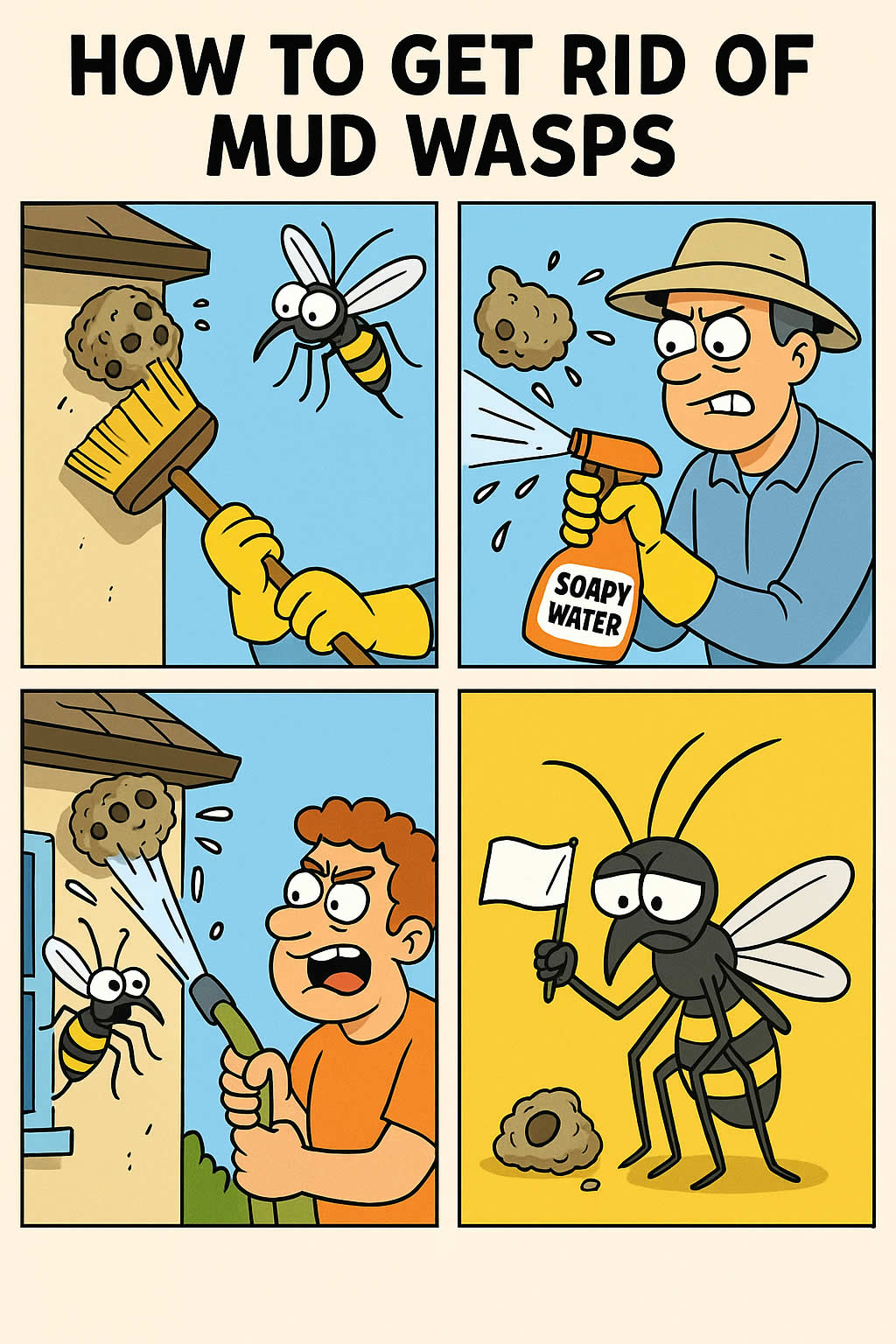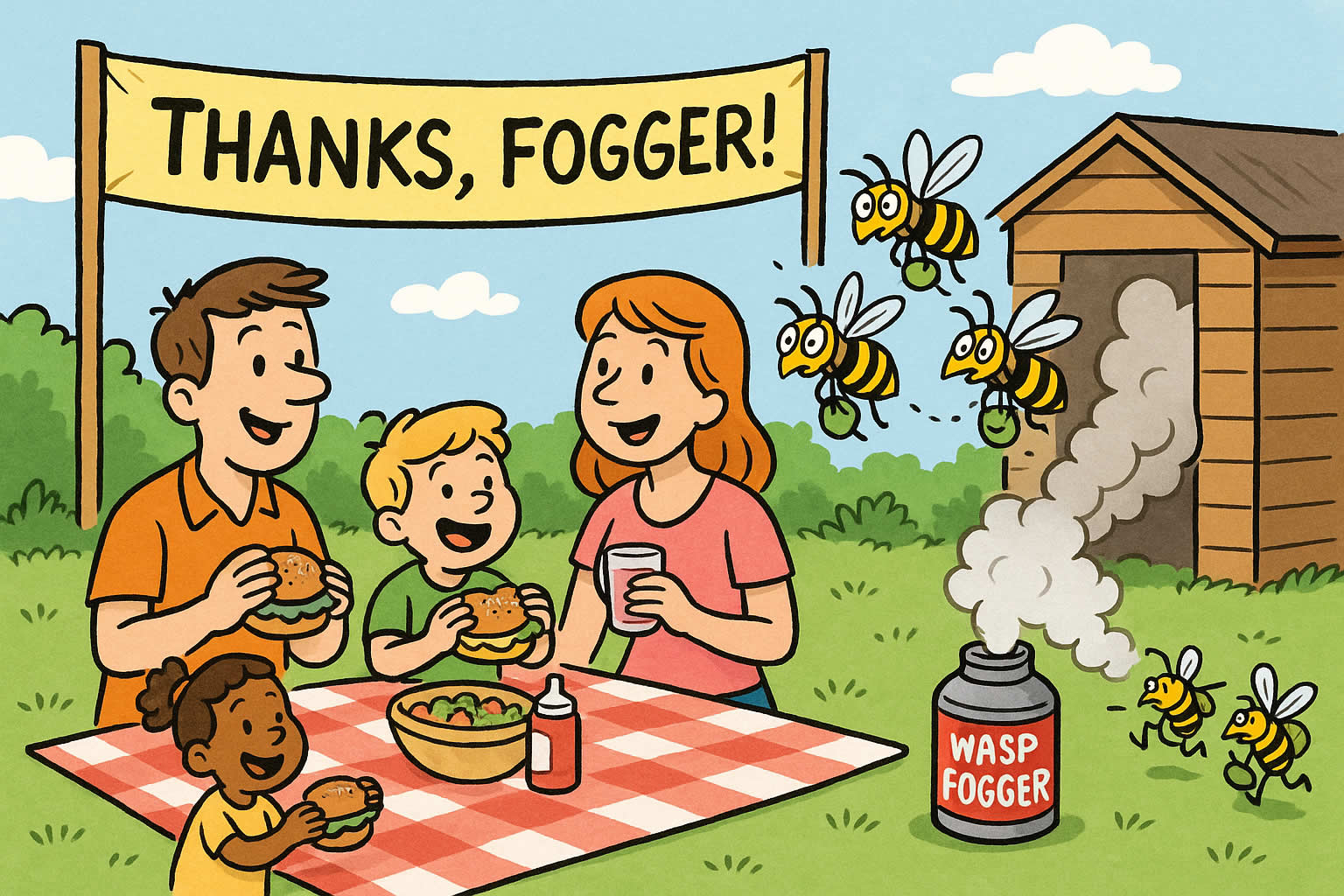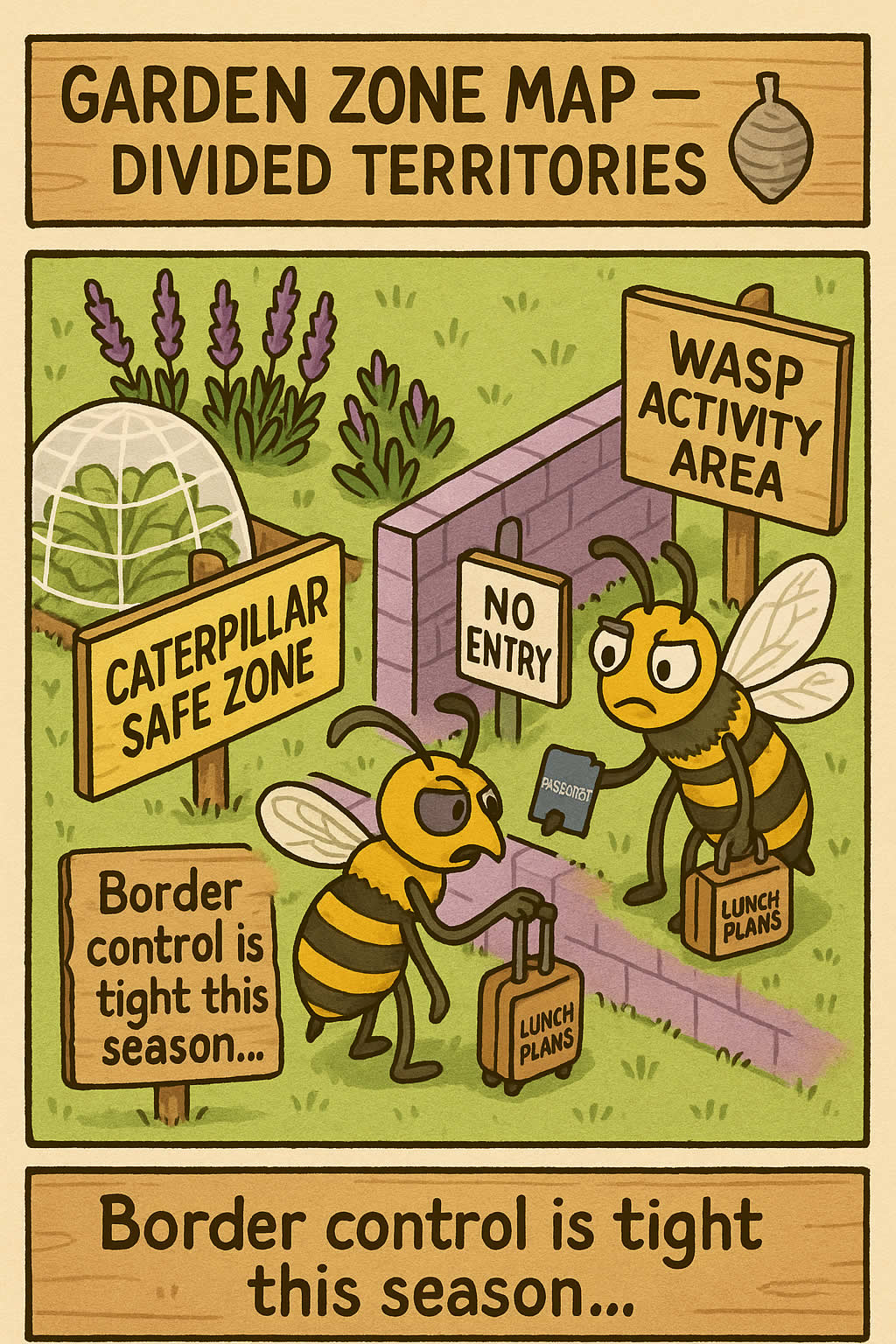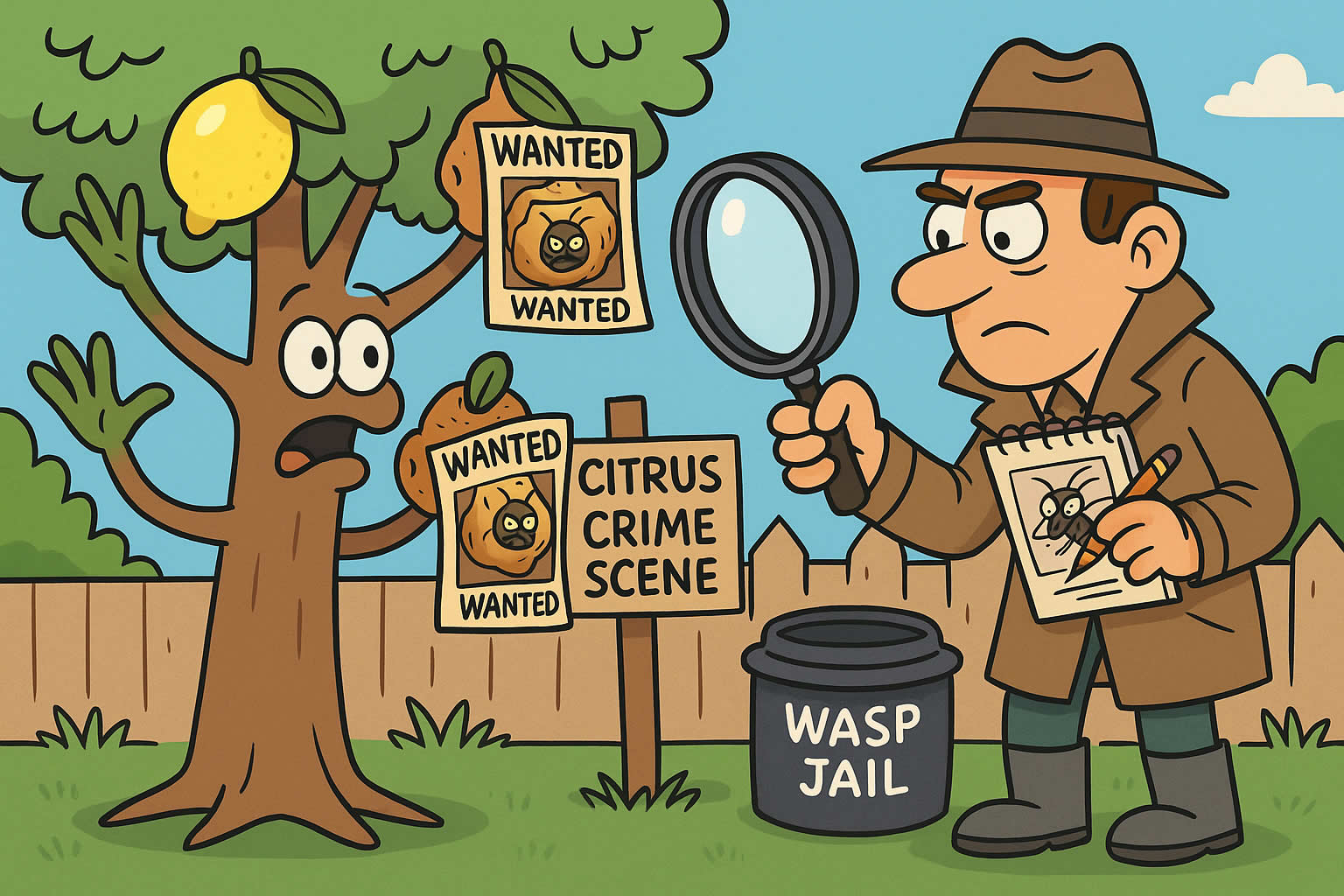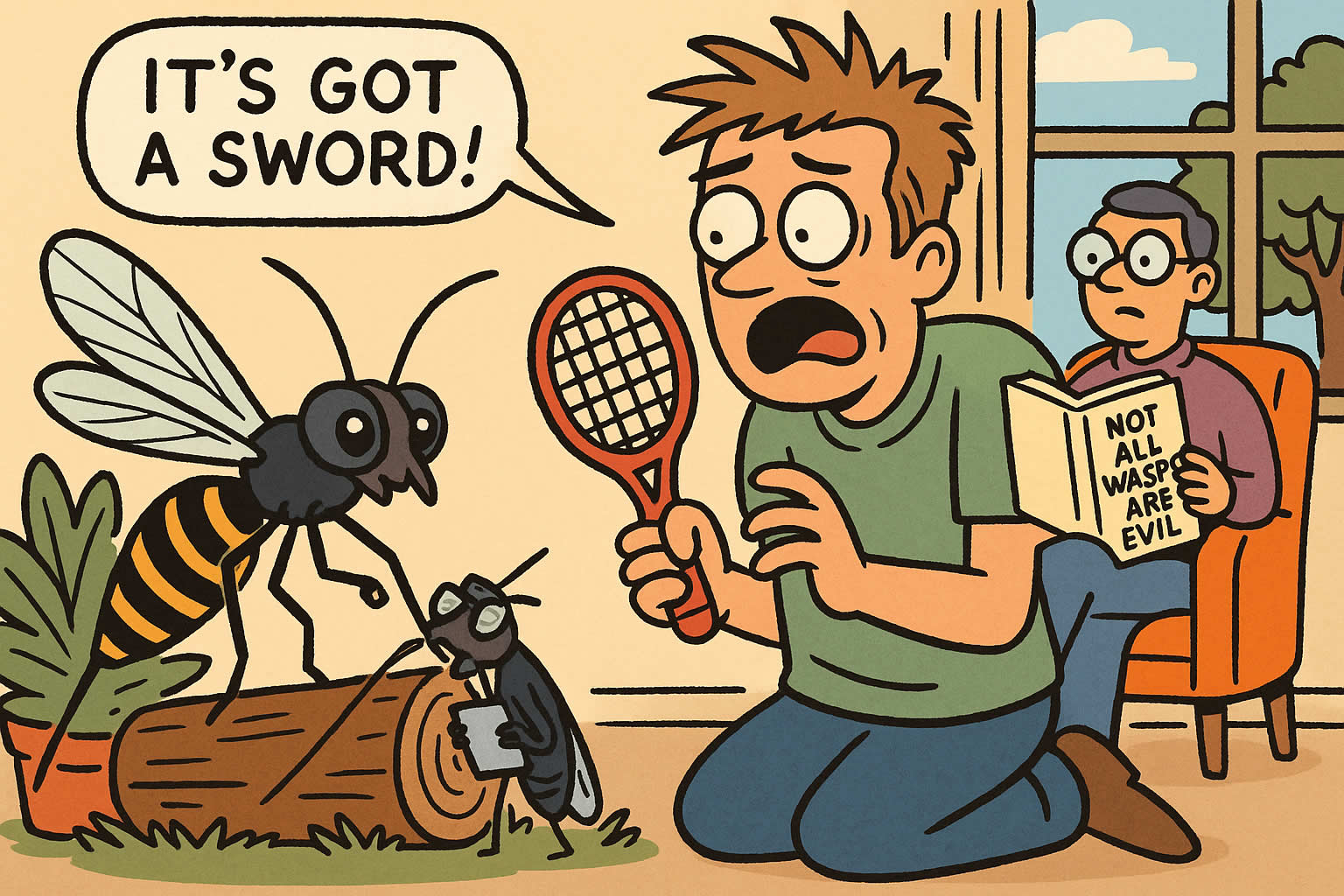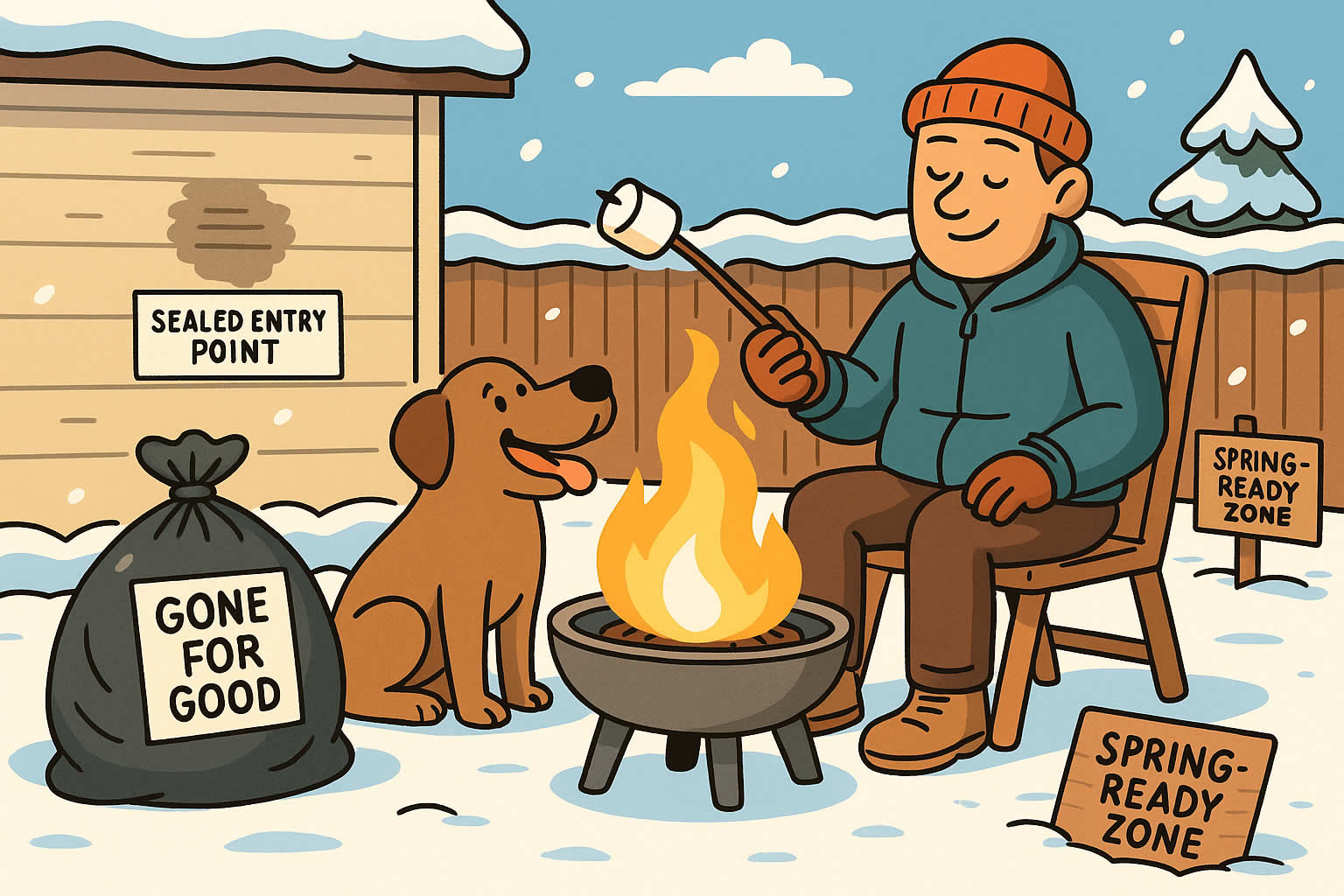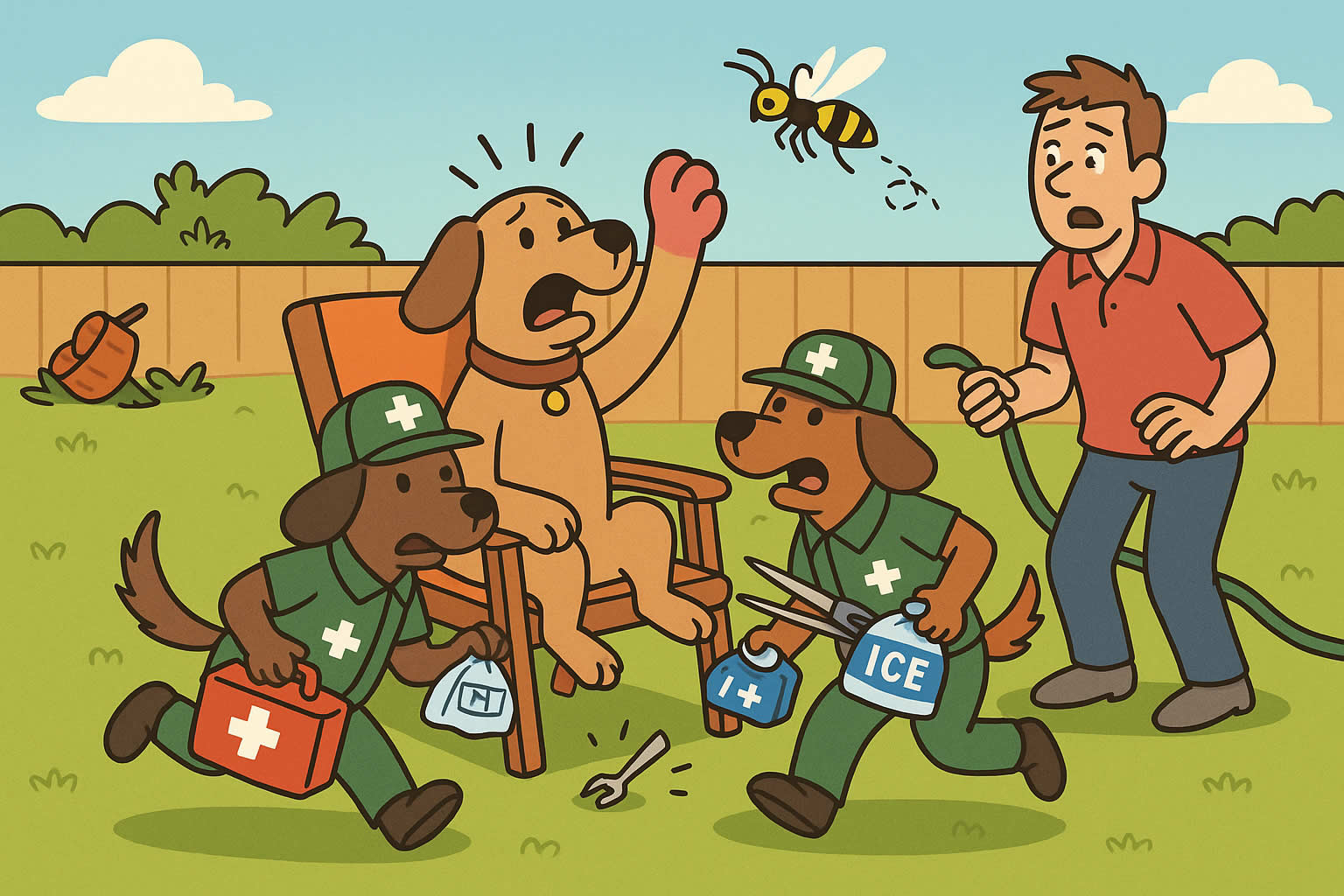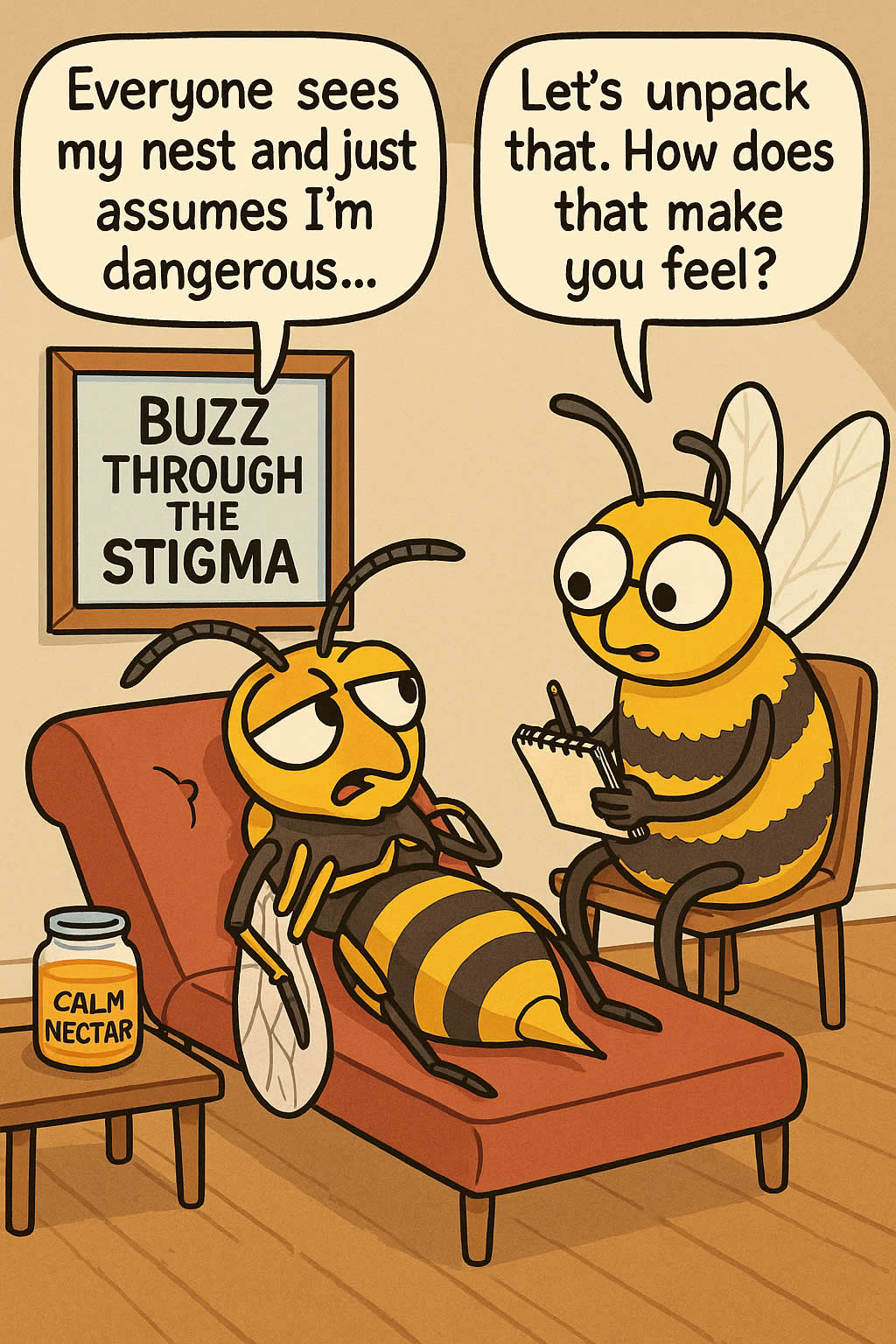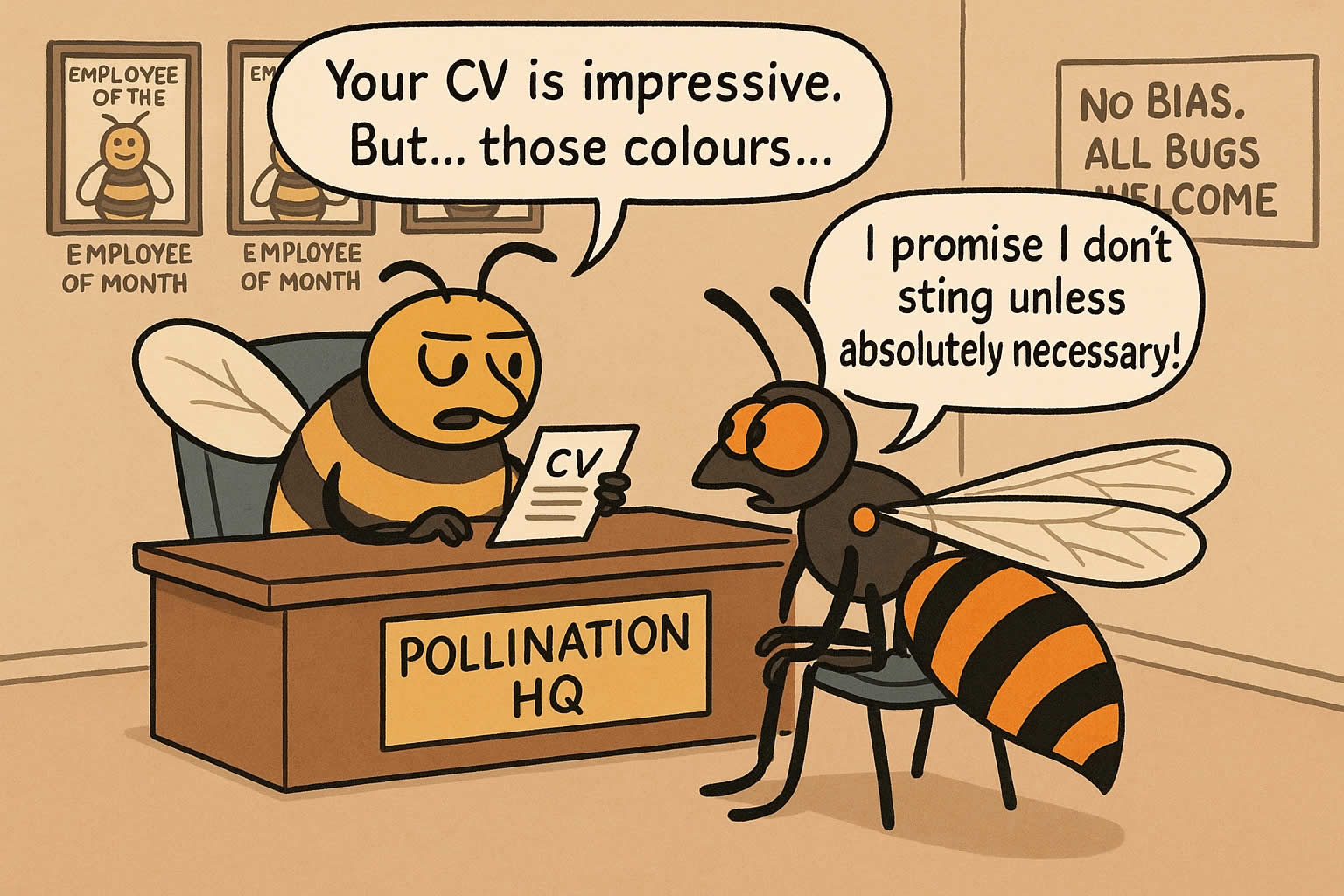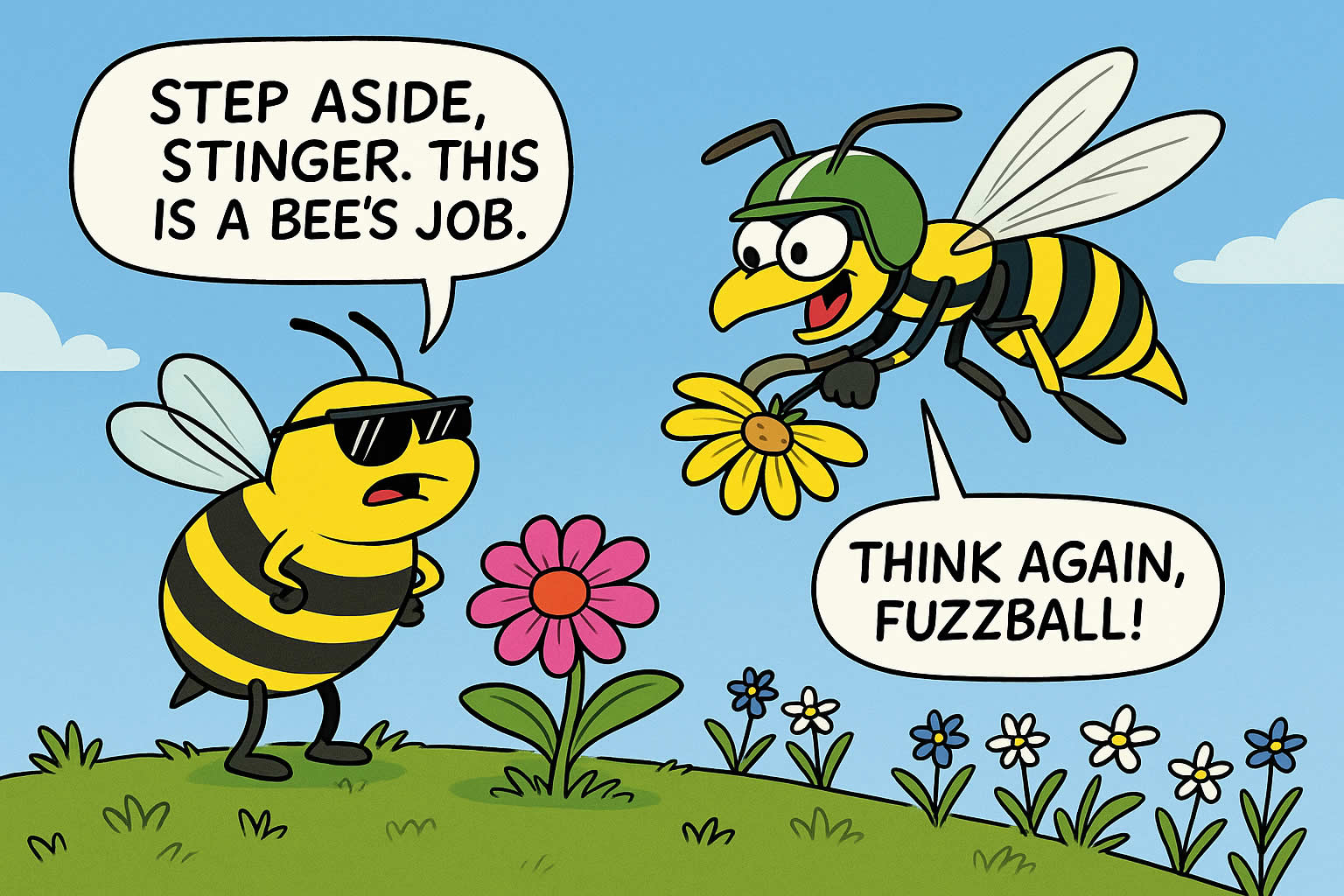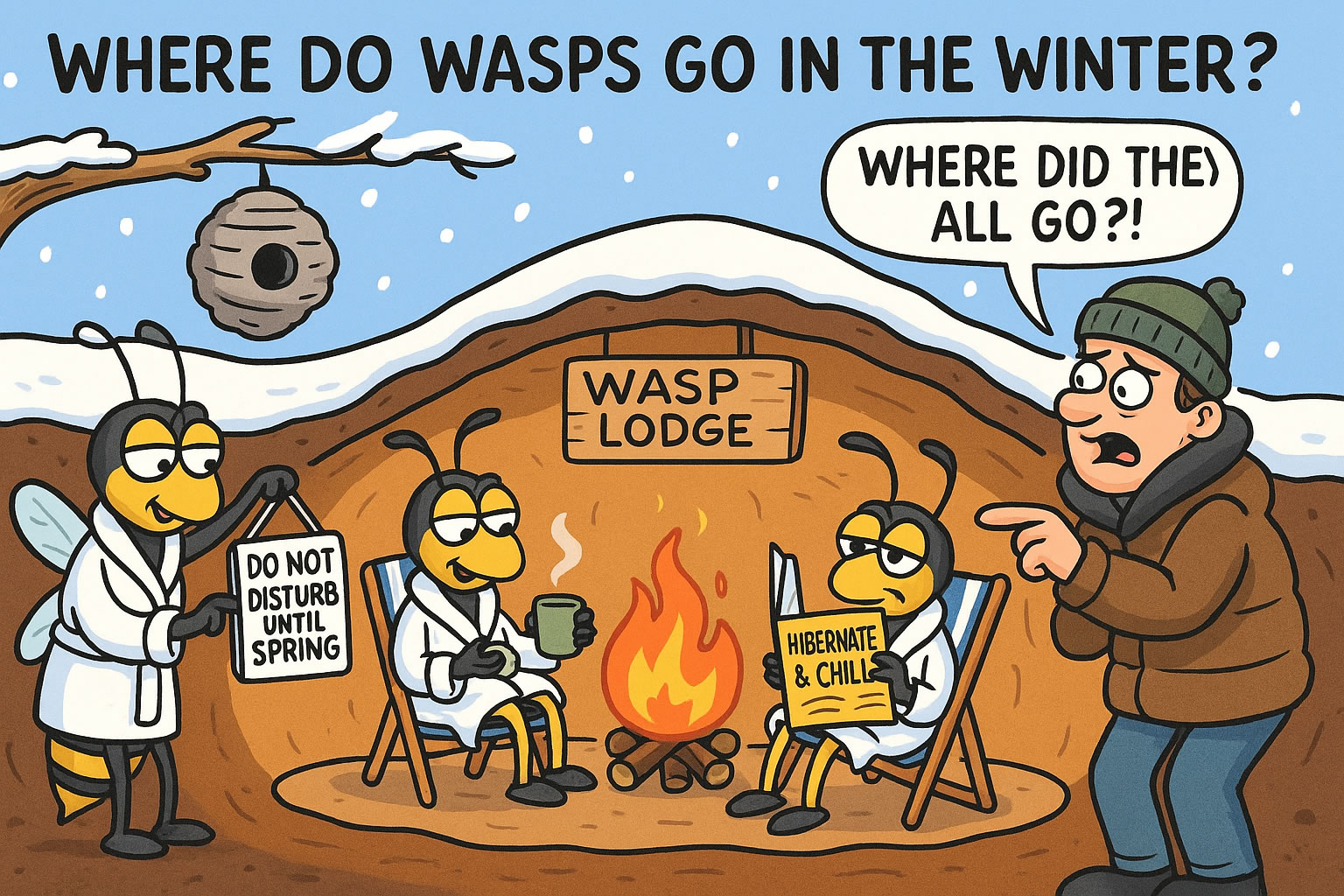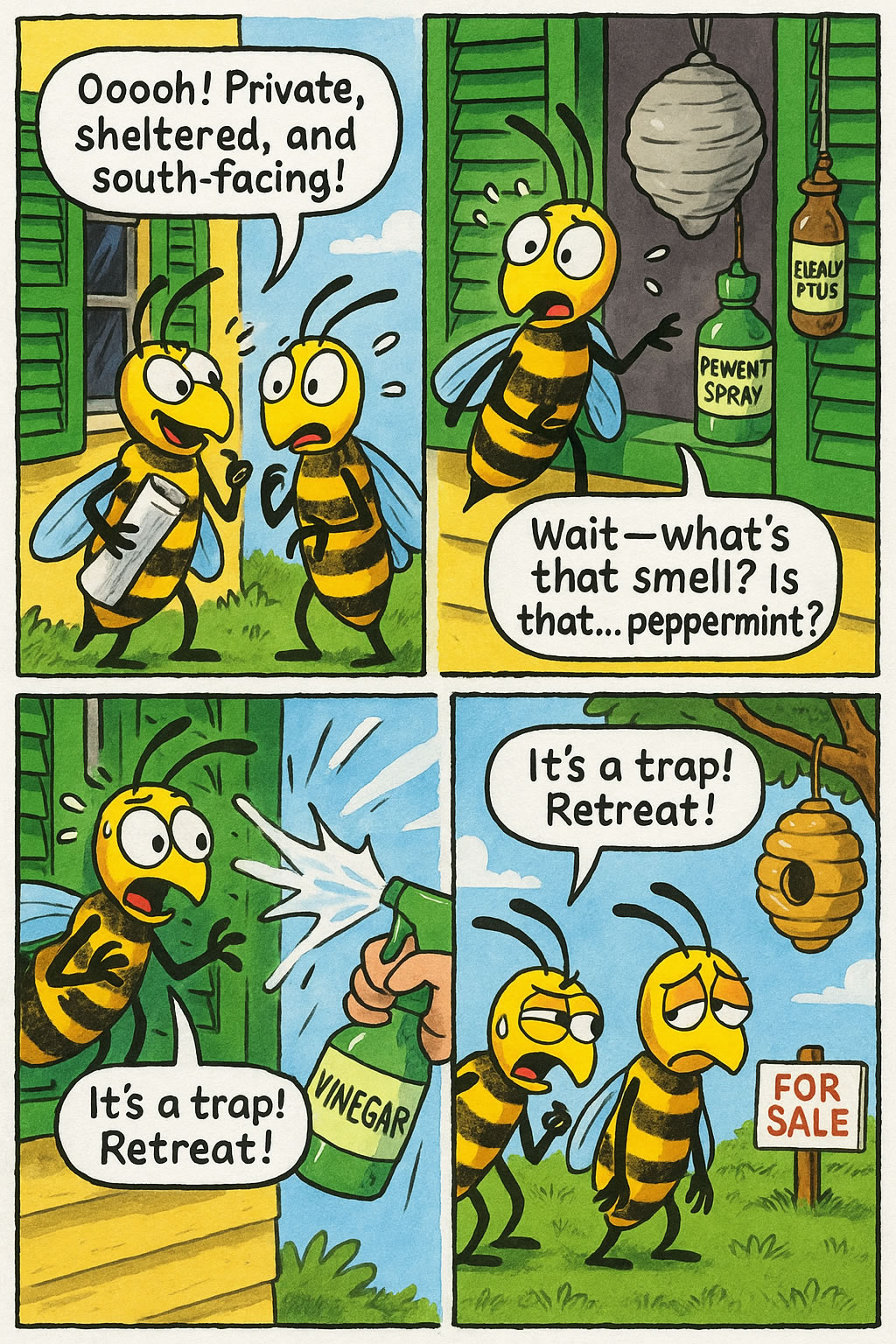Related Queries
ToggleMud wasps can be a real nuisance around your home. These insects are known for building their nests from mud, sticking them to walls, eaves, and even inside sheds or garages. If you’ve noticed these nests popping up around your property, you’re probably wondering how to get rid of them effectively and safely. This guide will walk you through everything you need to know.
What Are Mud Wasps?
Mud wasps are solitary wasps that build their nests using mud. Unlike social wasps, like yellow jackets or hornets, these wasps don’t live in large colonies. Instead, each female mud wasp is responsible for building her own nest, which usually consists of a series of mud cells. Inside these cells, she lays eggs and provides food for her larvae, typically paralysed spiders.
Common Types of Mud Wasps
- Mud Daubers: These are the most common. They build long, tube-like nests and are generally not aggressive.
- Potter Wasps: These create small, rounded, pot-like mud nests.
- Organ Pipe Mud Daubers: Known for their distinctive, pipe-shaped mud structures.
While mud wasps are generally not aggressive, they can still be a problem, especially if their nests start appearing all over your property.
Why Are Mud Wasps a Problem?
Mud wasps aren’t as aggressive as some other wasp species, but their nests can cause issues. They might:
- Build nests in unwanted places, like under eaves, in sheds, or even inside outdoor furniture.
- Leave mud stains on walls and surfaces.
- Multiply quickly if conditions are right.
- Startle people, especially those who are afraid of wasps.
While they’re actually beneficial in controlling other pests (like spiders), you don’t want them nesting in inconvenient places around your home.
Identifying Mud Wasp Nests
Before you try to get rid of mud wasps, you need to be sure you’re dealing with them. Mud wasp nests are usually:
- Made of mud, obviously.
- Small, single tubes or clusters of tubes, depending on the species.
- Located in sheltered areas, like under roof eaves, in sheds, or in corners of walls.
You might also see the wasps themselves, which are usually slender, with long, thin waists. Their colours can range from black and yellow to metallic blue, depending on the species.
Safety First: Precautions Before Removing Mud Wasp Nests
Before you start removing mud wasp nests, it’s important to take some safety steps:
- Wear Protective Clothing: Long sleeves, gloves, and a hat can help protect you.
- Choose the Right Time: Early morning or late evening is best because mud wasps are less active during these times.
- Have an Exit Plan: Make sure you have a clear path to retreat in case the wasps become aggressive.
- Avoid Using Harsh Chemicals Indoors: If a nest is inside your shed or garage, use natural or less-toxic methods.
Methods to Get Rid of Mud Wasps
There are several ways you can tackle a mud wasp problem. Choose the method that best suits your situation.
Physical Removal
The simplest way to get rid of a mud wasp nest is to physically remove it.
How to Do It:
- Wait for early morning or late evening when the wasps are less active.
- Wear protective clothing.
- Use a long-handled tool, like a broom or a stick, to knock the nest down.
- Once the nest is down, crush it with a boot or dispose of it in a sealed bag.
Soapy Water Spray
Soapy water is a natural way to kill mud wasps without using harsh chemicals.
How to Do It:
- Mix water with a few tablespoons of liquid dish soap in a spray bottle.
- Spray the nest directly, making sure it’s soaked.
- The soapy water clogs the wasps’ breathing pores, killing them quickly.
- Knock down the nest after ensuring the wasps are dead.
Wasp Spray (If Necessary)
If you’re dealing with a large number of mud wasps or you’re not comfortable getting close to the nest, a wasp spray can be an effective option.
How to Use It:
- Choose a wasp spray that’s designed for mud wasps.
- Stand at a safe distance and spray directly at the nest.
- Make sure to follow the instructions on the spray can.
- Remove the nest once the wasps are dead.
Use a Hose
If the nest is in an accessible outdoor area, a strong stream of water from a garden hose can knock it down.
How to Do It:
- Stand at a safe distance.
- Use a high-pressure setting.
- Spray directly at the nest until it falls.
Natural Remedies
If you prefer natural methods, you can try:
- Peppermint Oil Spray: Mud wasps dislike the strong smell of peppermint. Mix a few drops with water and spray it around nesting areas.
- Vinegar Spray: A mixture of vinegar and water can also act as a deterrent.
Preventing Mud Wasps from Returning
Getting rid of the nests is only part of the solution. You also need to take steps to prevent mud wasps from coming back.
Regular Cleaning
- Inspect your property regularly for new nests.
- Remove any small nests before they become larger.
Seal Entry Points
- Check for small gaps or cracks around windows, doors, and roof eaves.
- Use caulk or sealant to block these areas.
Use Natural Repellents
- Consider using peppermint oil or vinegar spray in areas where wasps are likely to build nests.
Maintain Your Garden
- Keep your garden tidy.
- Trim bushes and clear out debris where wasps might hide.
Keep an Eye on Windows and Doors
- Make sure window screens are intact.
- Keep doors closed as much as possible.
What If Mud Wasps Keep Coming Back?
If mud wasps continue to return despite your efforts, it might be time to call in a professional pest control service. They have the expertise and tools to deal with the problem safely and effectively.
When to Consider Professional Help
You should consider professional help if:
- You’re allergic to wasp stings.
- The nests are located in hard-to-reach or dangerous areas.
- You’ve tried multiple methods, but the wasps keep returning.
Final Thoughts
Mud wasps might not be the most aggressive pests, but they can still cause problems around your home. By understanding their behaviour and using the right methods, you can get rid of them and keep them from coming back.
Remember, the key to dealing with mud wasps is a combination of safe removal and effective prevention. If you’re ever unsure, don’t hesitate to reach out to a professional pest control service for help.
Rodent Removal Lancashire – Pest Control South Yorkshire – Flea Removal Merseyside
